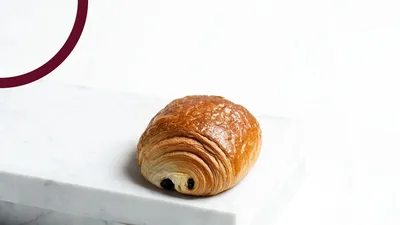Pain au Chocolat: What They Are and How to Make this Treat Even More Delicious
Pain au chocolat, also known as "chocolate croissant" in some places, is a beloved French pastry. It's made from a laminated dough, similar to the dough used for croissants, which gives it a flaky and buttery texture. Inside, there are strips of dark chocolate, creating a delightful contrast between the crispy outer layers and the rich, melty chocolate interior. This pastry is a popular breakfast or snack item.
A delicious French treat
While often called a chocolate croissant, especially in the U.S., pain au chocolat is distinct in shape and texture. Unlike a crescent-shaped croissant, it’s rectangular with two strips of dark chocolate inside its buttery, flaky layers. Here’s what makes this classic French pastry so special:
- Dough matters – Made with laminated pastry dough, just like croissants, for a crisp, airy bite.
- The right chocolate – Traditionally filled with dark chocolate batons that hold their shape while melting slightly inside.
- Variations to try – From mini pain au chocolat to vegan, almond, or pistachio versions, there’s a twist for every taste.
- Perfect for any time – A staple of French breakfasts, but just as delicious as an afternoon treat with a cup of coffee or tea.
Want to make the best pain au chocolat? Start with high-quality pastry dough and chocolate, and enjoy it warm for an even better experience.


Most popular variations
- Vegan Pain au Chocolat: A delicious plant-based version, made without any animal products.
- Mini Pain au Chocolat: Bite-sized versions, perfect for a quick and delightful treat.
- Almond Pain au Chocolat: Traditional pain au chocolat with an almond twist, adding a nutty flavour.
- Pistachio Pain au Chocolat: Unique and flavoursome, filled with rich chocolate and pistachio cream.
- Brioche Pain au Chocolat: A variation made with buttery brioche dough for extra richness.






